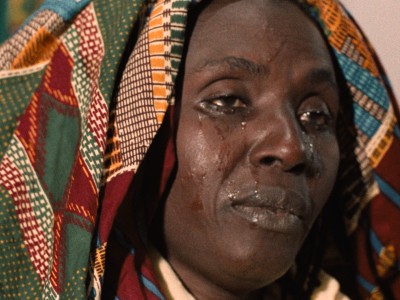
Emitaï
With Andongo Diabon, Robert Fontaine, Michel Renaudeau.
Senegal/France, 1971, DCP, color, 91 min.
Wolof and French with English subtitles.
DCP source: Janus Films
Dedicated to "all the militants of the African cause," Emitaï is the first in a series of controversial and revolutionary films about collective, anti-colonial resistance. Set in Sembène’s home territory of Casamance and filmed over two years, Emitaï depicts a real-life rebellion that took place in the forties. A Diola village is raided by French colonial officers and Senegalese tirailleurs who seek to seize the villagers’ rice. (One of these soldiers is played by Sembène, a self-critical gesture given his background as a former soldier of the Free French Army.) While the women (a group of non-professional actors led by Mbissine Thérèse Diop from Black Girl) fearlessly hide the rice, the hesitant men consult the gods. Sembène’s use of a loose tripod, combined with continual shifts from individual to individual and group to group, fill Emitaï with jolting electricity. Its breathtaking compositions—which incorporate trees, faces and limbs as frames—culminate in a potent vision of death that invokes Sergei Eisenstein’s Ivan the Terrible: Part II (1958). Though Emitaï was banned across Africa upon its release, it endures today as a moving portrait of resistance in which women take charge when even the gods fall silent.













